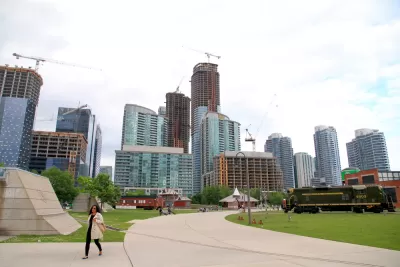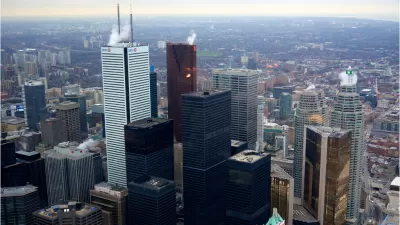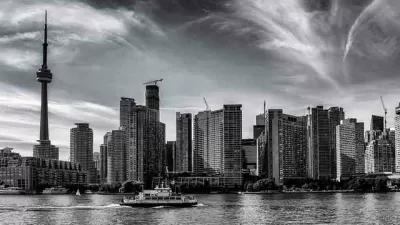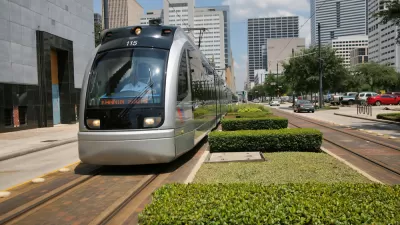It's hard to imagine a policy that so comprehensively acts to create disincentives for sprawl gaining political traction anywhere in the United States.

[Updated 5/23/2016] "With 3.5 million people set to move into the Greater Toronto and Hamilton Area over the next 25 years, the province is promising sweeping changes to manage smart growth and curb urban sprawl that’s crippling the region," according to an article by San Grewal.
Ontario Finance Minister Charles Sousa was joined by three other ministers to announce the "broad new measures the province is taking to properly manage future growth," according to Grewal. Sousa called the growth management strategy historic. The growth strategy is still only a proposal, regardless. "Many of the bold changes which will be reviewed until the end of September, before they can be incorporated into existing legislation," explains Grewal.
Among the proposed changes:
- Dense "pre-zoning" requirements along transit corridors.
- Requiring infill to comprise 60 percent of new residential development
- Increased commercial density to lessen the development of greenfield employment centers.
The article also includes a poll asking for reader's opinions of sprawl. The overwhelming majority of respondents say "it’s about time" the provincial government did something about sprawl.
Mississauga Mayor Bonnie Crombie produced a press release coinciding with the announcement of the growth strategy. The press release describes in more detail the process that produced the growth plan, as well as unequivocally voicing support for planning as the solution to the growth challenges facing the region.
[The post was updated to give proper credit to the current mayor of Mississauga.]
FULL STORY: Ontario setting new rules to end era of suburban sprawl across GTA

Planetizen Federal Action Tracker
A weekly monitor of how Trump’s orders and actions are impacting planners and planning in America.

Maui's Vacation Rental Debate Turns Ugly
Verbal attacks, misinformation campaigns and fistfights plague a high-stakes debate to convert thousands of vacation rentals into long-term housing.

Restaurant Patios Were a Pandemic Win — Why Were They so Hard to Keep?
Social distancing requirements and changes in travel patterns prompted cities to pilot new uses for street and sidewalk space. Then it got complicated.

In California Battle of Housing vs. Environment, Housing Just Won
A new state law significantly limits the power of CEQA, an environmental review law that served as a powerful tool for blocking new development.

Boulder Eliminates Parking Minimums Citywide
Officials estimate the cost of building a single underground parking space at up to $100,000.

Orange County, Florida Adopts Largest US “Sprawl Repair” Code
The ‘Orange Code’ seeks to rectify decades of sprawl-inducing, car-oriented development.
Urban Design for Planners 1: Software Tools
This six-course series explores essential urban design concepts using open source software and equips planners with the tools they need to participate fully in the urban design process.
Planning for Universal Design
Learn the tools for implementing Universal Design in planning regulations.
Heyer Gruel & Associates PA
JM Goldson LLC
Custer County Colorado
City of Camden Redevelopment Agency
City of Astoria
Transportation Research & Education Center (TREC) at Portland State University
Jefferson Parish Government
Camden Redevelopment Agency
City of Claremont





























